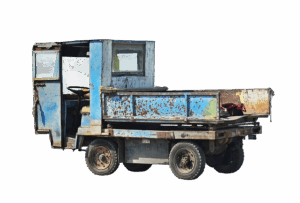Register Car California: Step-by-Step Guide with DMV VIN Verifier
Registering a car in California involves understanding specific requirements and gathering essential documents. This step-by-step guide will walk you through the process, ensuring a smooth experience……..

Registering a car in California involves understanding specific requirements and gathering essential documents. This step-by-step guide will walk you through the process, ensuring a smooth experience. From confirming your vehicle’s identity with a DMV VIN Verifier to completing the application, each phase is crucial for legal on-road operation. Learn how to efficiently navigate these steps and hit the California highways in no time.
- Understand California Car Registration Requirements
- Gather Necessary Documents for Registration
- Visit Your Local DMV Office or Use Online Services
- Complete Application and Provide Vehicle Information
- Verify Vehicle Identity with DVV (DMV VIN Verifier)
Understand California Car Registration Requirements

Before registering your car in California, it’s crucial to understand the state’s specific requirements. The California Department of Motor Vehicles (DMV) mandates that all vehicles operating within the state be properly registered and have passed a safety inspection. This process involves verifying the vehicle identification number (VIN) to ensure its authenticity and history.
One efficient way to meet these requirements is through mobile VIN verification or inspection services. These services utilize specialized tools to cross-reference your car’s VIN with national databases, providing instant access to crucial information such as vehicle history reports and any outstanding recalls. This streamlined approach can save you time and effort by allowing for quick registration without the need to visit a DMV office.
Gather Necessary Documents for Registration

Before you start the registration process, ensure you have all the required documents ready. The California Department of Motor Vehicles (DMV) will need several key pieces of information and paperwork to complete your car’s registration. One crucial document is the Vehicle Identification Number (VIN) verifier, which can be obtained through a mobile vin inspection or by using a reliable mobile vin verifier service. This unique identifier is essential for verifying the vehicle’s history and ensuring it meets all legal standards.
Additionally, you’ll need proof of ownership, typically in the form of a title document, as well as valid identification such as a driver’s license or state ID card. Other necessary items include insurance documents, emissions test results (if applicable), and any registration fees required at the time. Having these documents readily available will streamline the registration process at your local DMV office or when using their online services.
Visit Your Local DMV Office or Use Online Services

Visiting your local DMV office or utilizing online services are two effective ways to register a car in California. For those opting for in-person visits, ensure that you gather all necessary documents, including proof of ownership, identification, and the vehicle’s registration fee. The DMV staff will guide you through the process, which involves verifying the Vehicle Identification Number (VIN) of your car using their system. This step is crucial to ensuring the vehicle’s history and authenticity.
If you prefer a more convenient approach, California’s DMV offers online registration services. Here, you can complete the registration process from the comfort of your home or even on-the-go with the help of a mobile VIN verifier. This digital tool allows for a swift vin inspection, making it an efficient alternative for those looking to avoid long lines at the DMV.
Complete Application and Provide Vehicle Information

To register your car in California, you’ll need to complete an Application for Title and Registration (Form DMV-123). This form requires detailed information about your vehicle, including its make, model, year, and unique identification number – the Vehicle Identification Number (VIN). The VIN is a crucial piece of data used by the DMV’s vin verifier system to ensure the car’s history is accurately checked.
When providing your vehicle information, ensure accuracy and completeness. This includes details like the color, type of fuel, and any modifications made to the car. Additionally, you may need to undergo a mobile vin verification or conduct a vin inspection as part of the registration process, depending on the vehicle’s age and other factors. These steps help maintain California’s stringent standards for vehicle registration.
Verify Vehicle Identity with DVV (DMV VIN Verifier)

Before proceeding with registration, it’s crucial to verify your vehicle’s identity using a DMV VIN Verifier. This step ensures that the vehicle is genuine and matches the details in the registration records. You can perform this vin inspection through a mobile app or by visiting a DMV office. A mobile vin verification service is particularly convenient, allowing you to confirm the vehicle’s history and specifications from the comfort of your home or on-the-go.
The process typically involves entering your vehicle’s unique Vehicle Identification Number (VIN) into the designated tool. The dmv vin verifier then cross-references this information with the department’s database, providing details such as the car’s make, model, year, and any reported issues or accidents associated with that specific VIN. Ensuring accuracy at this stage helps prevent fraud and ensures a smooth registration process.
Registering a car in California is a straightforward process, ensuring your vehicle is road-ready. By understanding the state’s requirements, gathering essential documents, and completing the application accurately, you can efficiently navigate the registration procedure. Don’t forget to verify your vehicle’s identity using a DMV VIN verifier (dmv vin verifier) for added peace of mind. With these steps and the right documentation, you’ll have your California car registered in no time, allowing you to hit the open road legally and confidently.







